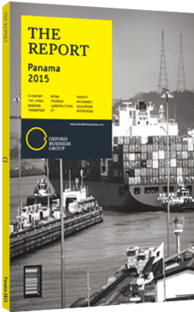Gina Montiel, Manager, Central America, Mexico, Panama and the Dominican Republic, Inter-American Development Bank: Interview

Interview: Gina Montiel
How can Panama broaden its energy mix?
GINA MONTIEL: Broadening the energy mix requires policies geared towards expanding generating capacity and diversifying sources. Availability of power has been outpaced by demand, so expanding capacity is key to maximising the economic potential of the Canal Zone. Demand is currently close to 2500 MW, 48% of which is met by hydropower. In fact, inefficiencies and droughts have driven capacity as low as 1600 MW and occasionally lower, while peak demand reached 1500 MW. Although the supply is theoretically enough to cover demand, the fact that the transmission grid is insufficient to deliver electricity and that electricity theft is estimated at $125m per year significantly hampers the country’s ability to meet demand. Diversifying sources will reduce risks of power shortages caused by outages in power plants. Panama should continue allocating investments towards renewables and natural gas.
How successful has Panama been at providing equitable access to health care and education, and what can be done to improve social inclusion?
MONTIEL: Panama has made significant progress in reducing poverty in recent years. However, education and health care services have not reached all segments of society. While Panama has shown improvements in education coverage, the figures indicating quality and relevance could be improved. Currently the average schooling period is 9.4 years, one of the highest in Latin America and the Caribbean. However, the Programme for International Student Assessment results ranked Panama 62nd of 65 countries. To address these issues, Panama should strengthen public and private technical education to meet labour market demands, strengthen the monitoring and evaluation of education to improve quality, and differentiate social assistance benefits to decrease the drop out rate from secondary education – especially in rural areas and comarcas.
The health care system has not been able to keep up with demand, especially in the comarcas. Coverage indicators place Panama behind other middle-income countries in Latin America and the Caribbean. While 20% of children under five in Panama suffer from chronic malnutrition, this is closer to 40% in the comarcas.
In order to tackle its health care challenges, Panama should update its health institutions to deal with a double epidemiological profile: firstly, there are significant gaps between the national average and the comarcas for infectious diseases, maternal, newborn and paediatric health care; secondly, due to demographic transitions within the country, the number of degenerative chronic diseases reported has grown. Furthermore, Panama should consolidate a single public health system to reduce differences in health services. This should reduce inefficiencies, free resources, and standardise facilities for preventive medicine and emergency services in urban, rural and comarcas settings.
What can be done to bridge the digital gap between Panama’s urban and rural areas?
MONTIEL: Those excluded from the digital economy are increasingly at a disadvantage, as information and services continue to move online. To close this gap, policies should focus on expanding access in rural areas and enhancing computational skills to make the best use of them. The answer to bridging the rural-urban gap is to improve local content creation, including, for instance, introducing a mobile payment system designed and created specifically for rural needs.
The private sector plays a key role in bridging the digital gap. However, to achieve the full potential of the information society, the private sector must recognise the socio-economic benefits of bringing ICT firms to rural areas. It is important to be aware that the government cannot bridge the digital gap alone, and that this is a prime opportunity for the private sector to get involved. Therefore, public-private partnerships are ideally suited to bringing ICT to disadvantaged segments of society. Furthermore, the government should work with NGOs to help people make productive use of ICT.
You have reached the limit of premium articles you can view for free.
Choose from the options below to purchase print or digital editions of our Reports. You can also purchase a website subscription giving you unlimited access to all of our Reports online for 12 months.
If you have already purchased this Report or have a website subscription, please login to continue.

